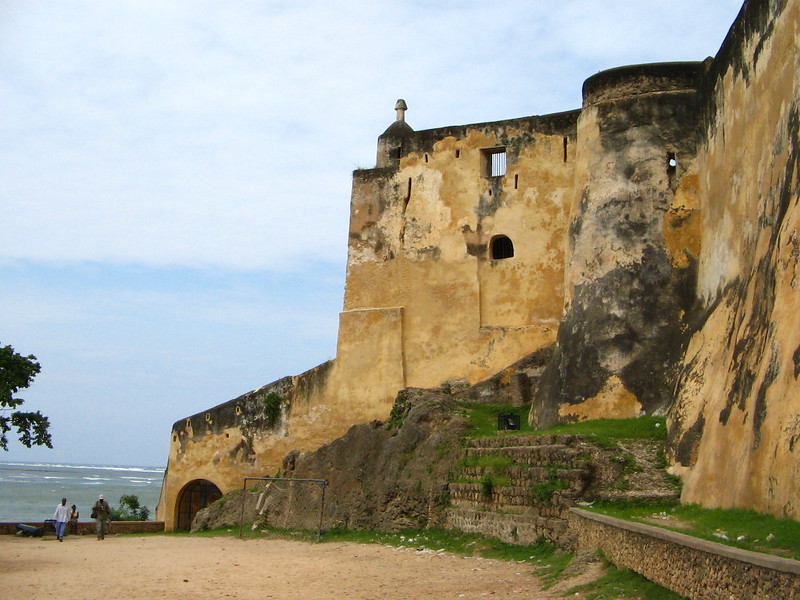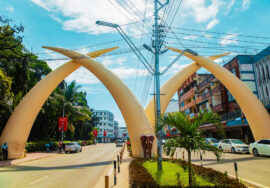
FORT JESUS
FORT JESUS.
Fort Jesus is the only fort in Africa that has been through as much turbulence as it has. During a significant portion of its turbulent history, the dominating fort has been passed from one nation to another on multiple occasions as nations have fought for control over this entrance to India. Fort Jesus was taken by the Portuguese, Muslim soldiers, Swahili warriors, and British colonialists nine times between the years 1631 and 1875. During this time period, it was captured, defeated, and retaken by each of these diverse groups.
Taking a trip to the fort, with its enormous interior and walls that are 18 meters (60 feet) high, is like watching a dramatic presentation of Mombasa’s history unfold before your eyes. Due to the fact that whomever commanded the fort was the master of the city as well as the wealth of the trade routes that led to the Indian Ocean.
The architecture of the fort is a fusion of European, Middle Eastern, and African styles. This is due to the fact that it was used by a large number of masters over the course of several centuries. A magnificent structure that offers dominating views of the Port of Mombasa is the end result of this building project. In addition, what other fort can claim of the utilization of European gun batteries in conjunction with the incorporation of Koranic inscriptions throughout its buildings?
The King, Philip I
It was King Philip I who issued the royal order in 1593 that led to the construction of the fort. The purpose of the fort was to provide protection to the Portuguese who lived along the East Coast of Africa and to demonstrate the authority of that nation to control trade routes to the east. Giovanni Battista Cairati, an architect from Milan, constructed the redoubt in the Renaissance style with five bastions. However, the local Swahili people were responsible for providing both the coral stone material and the labor.
The sloping stone walls were not only finished in 1596, but they were also constructed to deflect cannonballs. When the fort is viewed from above, its layout is in the shape of a man lying on his back with his head facing the ocean, as if he is watching all those who come near. This is an interesting element of the fort.
The strategic position of the fort was so important that it didn’t take long before the Sultan of Mombasa challenged the Portuguese ruling power. In 1631, the Sultan of Mombasa was successful in defeating the Portuguese and gaining control of the fortress.
As a result, a conflict that lasted for three hundred years between rival powers for control of Mombasa began. In the 1870s, the British were finally successful in their mission to transform the fort into a jail. It was the first time in centuries that its massive walls were used to prevent people from leaving rather than allowing them to enter.
It was in 1958 that the big fort was declared as a Kenya National Park, and in 2011, it was also given the UNESCO World Heritage Site designation. At the present time, the fort is regarded as a masterpiece of Renaissance military building and is the most visited sight in Mombasa.
Paying a visit to the Fort
A living museum of history, civilizations, and beautiful artifacts is comprised of the enormous fort itself as well as the different displays that are spread out around its grounds and structure. Explore the ruins of Portuguese warships, as well as the jewelry and weaponry of the Omani people.
There is pottery and other artifacts that date back to the time when Mombasa was a part of the route that was used for the slave trade. Amulets made of Persian porcelain and Chinese porcelain serve as memories of the diverse ethnicities that have traversed these walls throughout the course of history.
About the Climate of Fort Jesus Mombasa has a tropical climate, and the winter months see a greater amount of rainfall than the other months. With an average temperature of 29 degrees Celsius (82 degrees Fahrenheit), March is often the warmest month of the year.
Location: Old Town Mombasa, which is located on the waters edge
Fort Jesus is open every day from 8:00 a.m. to 18:00 p.m., which is the daily operating hours.
When it comes to getting there, African Safari Kenya in Mombasa is the company to contact to organize a tour.
Mombasa, which is located on the coast, is served by Moi International Airport, which is the primary aviation hub for the city.
Displays from 42 Portuguese warships that sank during the Omani Siege in 1697 may be found in the museum, which is situated in the middle of the fort and provides a variety of exciting things to do and see.
Mazrui Hall is where you will see decorations and items that have been left behind by the various nationalities of the people who have lived in the area over the course of the centuries. These include graffiti and sketches taken by Portuguese sailors, drawings of Arab dhows, and pictures of the traditional Swahili sailing ship known as the mtepe.
The Sultan of East Africa commissioned the construction of the Omani House in the 18th century. It is situated within the San Felipe bastion and was constructed for him. Jewelry, weaponry, a nearby audience hall, and the painted passage of the arches are all things that may be found within at this location.
Since its founding in 1993, the Swahili Cultural Centre has been dedicated to educating young Kenyans in both traditional Swahili crafts and contemporary business methods in order to help them achieve self-sufficiency.
Find out about Fort Jesus.
Within the imposing walls of Africa’s most illustrious fortress, you will have the opportunity to learn about the eventful history of Mombasa. Throughout the years, you will be able to observe, learn about, and experience the struggles that the great powers have faced. A trip to Fort Jesus can teach you about the ups and downs of human kind’s aspirations and the course of their lives.








